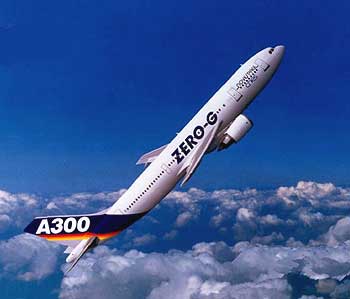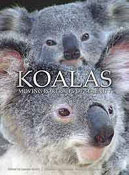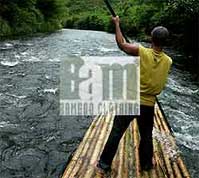French surgeons operate under zero gravity
French physicians have announced that they plan to conduct an experiment to perfect surgical techniques in zero-gravity; however, neither patient or physician will have to risk the trip into orbit. Rather, they will simply have to stomach 20-30 gut wrenching, over the top roller coaster maneuvers strapped to the inside of a giant A300 Airbus dubbed “Zero-G”, which is owned and operated by the European Space Agency.
 French surgeon Dominique Martin plans to remove surgically a cyst from the arm of patient Phillipe Sanchot during a three-hour operation. The routine operation will involve short periods of weightlessness as the Airbus arcs over the peak of a steep climb and free falls simulating a few moments of weightlessness. The sensation is what we feel when an automobile suddenly seems to leave the ground as it clears a small rise in the road.
French surgeon Dominique Martin plans to remove surgically a cyst from the arm of patient Phillipe Sanchot during a three-hour operation. The routine operation will involve short periods of weightlessness as the Airbus arcs over the peak of a steep climb and free falls simulating a few moments of weightlessness. The sensation is what we feel when an automobile suddenly seems to leave the ground as it clears a small rise in the road.
For year’s NASA has used such a flight technique to condition its astronauts for functioning in zero gravity conditions prior to sending them into orbit. During these flight training sessions, astronauts typically float freely about the inside of the padded fuselage, learning to twist and turn their bodies under conditions approximating weightlessness.
For the surgeon and patient such free floating acrobatics will not work however. Strapped to the inside of the plane’s wall Dr. Martin will have to control his surgical tools and work to steady one instrument after another as the surgery progresses through a series of stops and starts. Sanchot, an extreme sports enthusiast was chosen for the experiment because he is an avid bungee jumper and is use to the sensation of freefall.
The team of surgeons will also learn how to control stray bits of material such as blood, serum or tissue typically released during surgery. Under normal circumstances, this loose material would be held by gravity inside the area of the surgical site until removed by a physician or physician’s attendant.
Space physicians and scientists hope that by conducting such experiments in zero-gravity surgery, they can to add to their body of knowledge regarding future possible surgery preformed by astronauts and or surgical robots during missions to the International Space Station.
For further reading on experiments with remote surgical techniques, called tele-surgery read our interview with NASA astronauts aboard the underwater sea lab NEEMO earlier this year.
Harlan Weikle
Greener Magazine
 French surgeon Dominique Martin plans to remove surgically a cyst from the arm of patient Phillipe Sanchot during a three-hour operation. The routine operation will involve short periods of weightlessness as the Airbus arcs over the peak of a steep climb and free falls simulating a few moments of weightlessness. The sensation is what we feel when an automobile suddenly seems to leave the ground as it clears a small rise in the road.
French surgeon Dominique Martin plans to remove surgically a cyst from the arm of patient Phillipe Sanchot during a three-hour operation. The routine operation will involve short periods of weightlessness as the Airbus arcs over the peak of a steep climb and free falls simulating a few moments of weightlessness. The sensation is what we feel when an automobile suddenly seems to leave the ground as it clears a small rise in the road. For year’s NASA has used such a flight technique to condition its astronauts for functioning in zero gravity conditions prior to sending them into orbit. During these flight training sessions, astronauts typically float freely about the inside of the padded fuselage, learning to twist and turn their bodies under conditions approximating weightlessness.
For the surgeon and patient such free floating acrobatics will not work however. Strapped to the inside of the plane’s wall Dr. Martin will have to control his surgical tools and work to steady one instrument after another as the surgery progresses through a series of stops and starts. Sanchot, an extreme sports enthusiast was chosen for the experiment because he is an avid bungee jumper and is use to the sensation of freefall.
The team of surgeons will also learn how to control stray bits of material such as blood, serum or tissue typically released during surgery. Under normal circumstances, this loose material would be held by gravity inside the area of the surgical site until removed by a physician or physician’s attendant.
Space physicians and scientists hope that by conducting such experiments in zero-gravity surgery, they can to add to their body of knowledge regarding future possible surgery preformed by astronauts and or surgical robots during missions to the International Space Station.
For further reading on experiments with remote surgical techniques, called tele-surgery read our interview with NASA astronauts aboard the underwater sea lab NEEMO earlier this year.
Harlan Weikle
Greener Magazine



1:38 PM









<< Home